Identifying the Factors Influencing the Customer Adoption of Internet Banking of Bank of Ceylon
Identifying the Factors Influencing the Customer Adoption of Internet Banking of Bank of Ceylon
By M.A.V Kaushalya
URL:
Citation:
Date: 2022
Supervisor: Nalin Abeysekera
Abstract
The main objective of conducting this research was to identify the factors influencing the customer adoption of Internet Banking of Bank of Ceylon. Other than the key objective, this research has highlighted the current usage level of internet banking among existing customers, the challenges bank and customers have to face while adopting the internet banking for their day-to-day banking needs and the suggestions to improve the internet banking facility based on the results taken from the survey and comments given by the respondents. During the prior studies, it was identified that even though bank has invested heavily on technology, the adoption rate is considerably low during the past few years. Bank management has expectations to improve the adoption of internet banking in an exponential manner to provide a better service to their customers. Hence, five independent variables have been identified after critical review of the literature to measure the customer adoption of internet banking of Bank of Ceylon. Perceived Ease of Use, Perceived Usefulness, Perceived Risk & Security, Social Influence and the Demographic Factors are the identified independent variables. Questionnaire has been designed with the expectation of identifying the current adoption level and measure the influence of above factors on the adoption of internet banking and it was distributed among the customers in Western Province branches. Stratified random sampling technique was used to identify the sample size and the data analysis was done using SPSS analytical software. According to the results 49% of respondents are currently using the internet banking and all five factors mentioned above indicated that there is a positive correlations with adoption of internet banking. Thus, it is recommended that bank should focus on these factors which influence the adoption of internet banking to improve the customer base who are using internet banking facilities for their day-to-day banking transactions and requirements and promote this facility among potential customers.
Download File
File Name: Identifying the Factors Influencing the Customer Adoption of Internet Banking of Bank of Ceylon
Size: 399 KB
Format: PDF
Browse By
© 2012-2019 ICBT Campus | Design by ICBT IT Team | ICBT All Rights Reserved.
Design by ICBT IT Team

